Outer Space & Universe
Outer Space & Universe
Space, also known as outer space, is the near-vacuum between celestial bodies. It is where everything (all of the planets, stars, galaxies and other objects) is found.
On Earth, space begins at the Kármán line (100 km above sea level). This is where Earth's atmosphere is said to stop and outer space begins. This is not a firm boundary but is a convention used by scientists and diplomats.
Items in space are free to move back and forth; up and down; and left and right. These three dimensions are what make 3D space. Items also move forward through time, which is sometimes called the fourth dimension.
The majority of space contains very little matter and so most of it is a vacuum. Scientists do not know how big space is but we do know that space is extremely big, and is always expanding.
According to the big bang theory, all matter and energy in the Universe was compressed into a very small space. Then it exploded and started expanding. Space is still growing in size today; this means the distance from one galaxy to distant galaxies is getting longer.
Gravity is the force that keeps the Moon in orbit around the Earth and the planets in orbit around the Sun. Gravity can stretch and bend space similar to how a heavy ball placed on a stretched sheet of rubber will cause the rubber to stretch. The scientist who discovered that space can bend is named Albert Einstein. How gravity bends space is part of his theory of general relativity.
Astronauts, Cosmonauts, Taikonauts and Spationauts
An astronaut is any person who is trained by NASA to travel and perform tasks in space. Although the space traveler may not necessarily be a United States citizen, each astronaut does go through a rigorous training regiment by the National Aeronautics and Space Administration. Other space travelers go by other names then astronaut depending on their country of origin.
In the United States, astronaut is derived from the Greek words ástron (star) and nautis (sailor). While, in Russia, a space traveler goes by the name космонавт (English: cosmonaut), which is derived from the Greek words kosmos (universe) and nautis (sailor). Westerners call a space traveler from China a taikonaut, based on the 1998 writings of Chiew Lee Yik and Chen Lan where the term tàikōng (great emptiness), Chinese for “space”. In China, the term yuháng yuán (universe navigator) is used for space traveler.
Only the United States of America (United States), Russia (earlier, the Union of Soviet Socialist Republics), and the People’s Republic of China (China) have sent manned spacecraft into space. Other countries have assisted these countries by sending their own space travelers on space missions. For instance, a French space traveler is called a spationaut (from the French word spationaute), which is derived from the Latin spatium (space) and Greek nautis (sailor). (plural in Greek nautes = sailors)
-
00:30

Pan: NGC 5042
Added 25 Views / 0 LikesThis vibrant spiral galaxy and the subject of today’s NASA/ESA Hubble Space Telescope Picture of the Week is NGC 5042, which resides about 48 million light-years from Earth in the constellation Hydra (the water snake). The galaxy nicely fills the frame of
-
00:30

Pan Video: NGC 2283
Added 22 Views / 0 LikesThe target of today’s NASA/ESA/CSA James Webb Space Telescope Picture of the Month is the spiral galaxy NGC 2283. This galaxy resides roughly 45 million light-years away in the constellation Canis Major. Classified as a barred spiral galaxy, NGC 2283’s ce
-
00:30
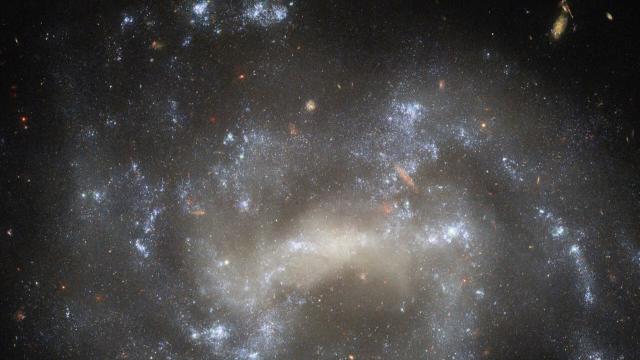
Pan: UGC 5460
Added 14 Views / 0 LikesThe sparkling spiral galaxy gracing this NASA/ESA Hubble Space Telescope Picture of the Week is UGC 5460, which sits about 60 million light-years away in the constellation Ursa Major. This image combines four different wavelengths of light to reveal UGC 5
-
00:30
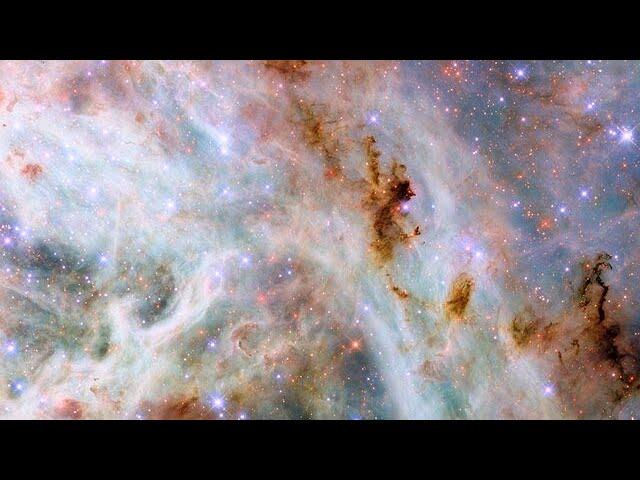
Pan: Tarantula Nebula
Added 31 Views / 0 LikesThe Universe is a dusty place, as this NASA/ESA Hubble Space Telescope Picture of the Week shows. Featured in this image are swirling clouds of gas and dust near the Tarantula Nebula in the Large Magellanic Cloud. About 160 000 light-years away in the con
-
00:30
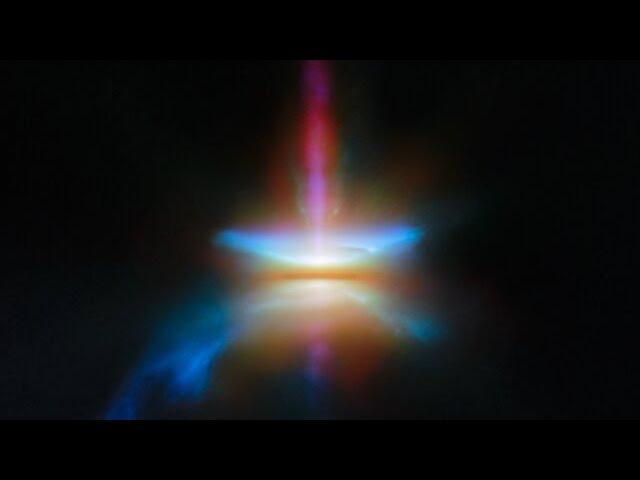
Pan Video: HH 30
Added 23 Views / 0 LikesThis new NASA/ESA/CSA James Webb Space Telescope Picture of the Month presents HH 30 in unprecedented resolution. This target is an edge-on protoplanetary disc that is surrounded by jets and a disc wind, and is located in the dark cloud LDN 1551 in the Ta
-
00:30
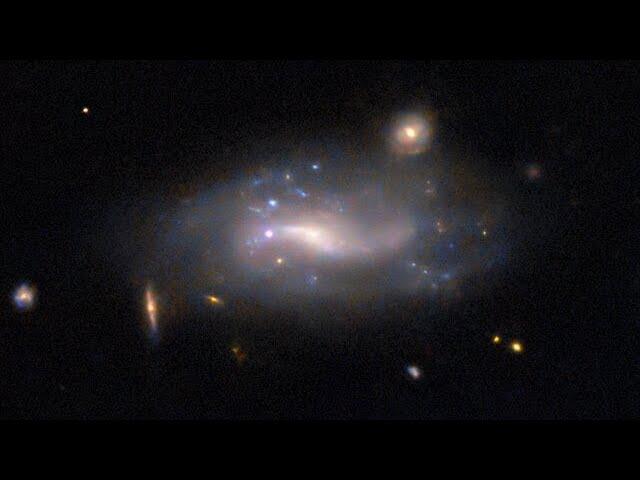
Pan: LEDA 132905
Added 28 Views / 0 LikesA supernova and its host galaxy are the subject of today’s NASA/ESA Hubble Space Telescope Picture of the Week. The galaxy in question is LEDA 132905, which is situated in the constellation Sculptor. Even at over 400 million light-years away, LEDA 132905’
-
00:30
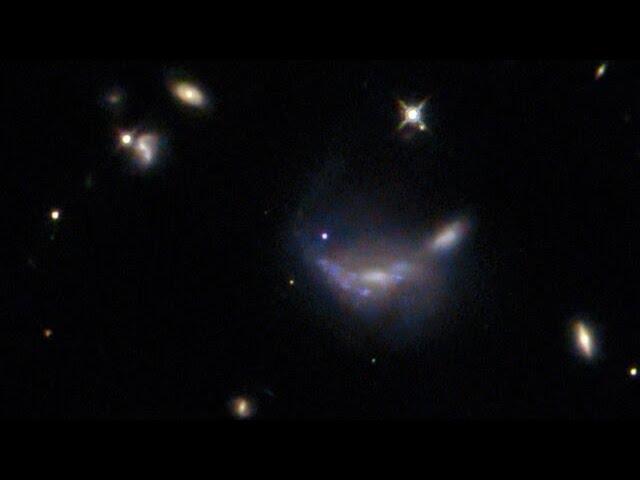
Pan: SN 2022aajn
Added 22 Views / 0 LikesOther than the announcement of its discovery in November 2022, SN 2022aajn has never been the subject of published research. Why, then, would Hubble observe this supernova? SN 2022aajn is what’s known as a Type Ia supernova, which results from the explosi
-
00:30
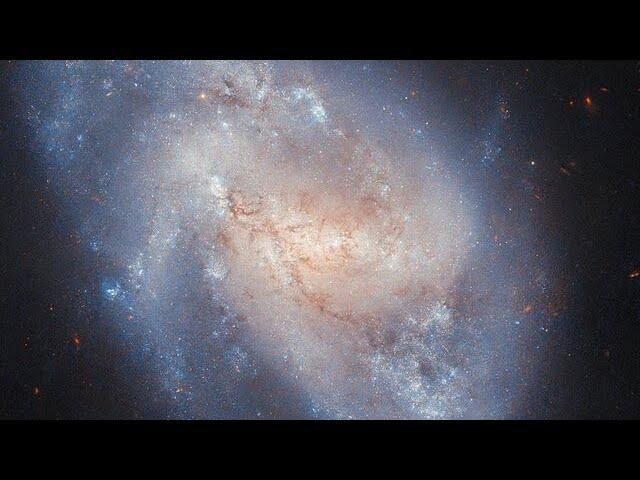
Pan: NGC 337
Added 22 Views / 0 LikesThe subject of this NASA/ESA Hubble Space Telescope Picture of the Week is the spiral galaxy NGC 337, located about 60 million light-years away in the constellation Cetus (The Whale).This image combines observations made at two wavelengths, highlighting t
-
00:30
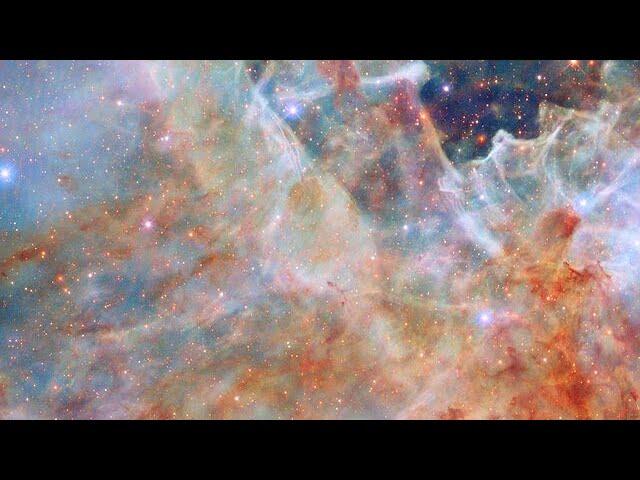
Pan: The Large Magellanic Cloud
Added 26 Views / 0 LikesToday’s NASA/ESA Hubble Space Telescope Picture of the Week features a dusty yet sparkling scene from one of the Milky Way’s satellite galaxies, the Large Magellanic Cloud. The Large Magellanic Cloud is a dwarf galaxy situated about 160 000 light-years aw
-
00:30
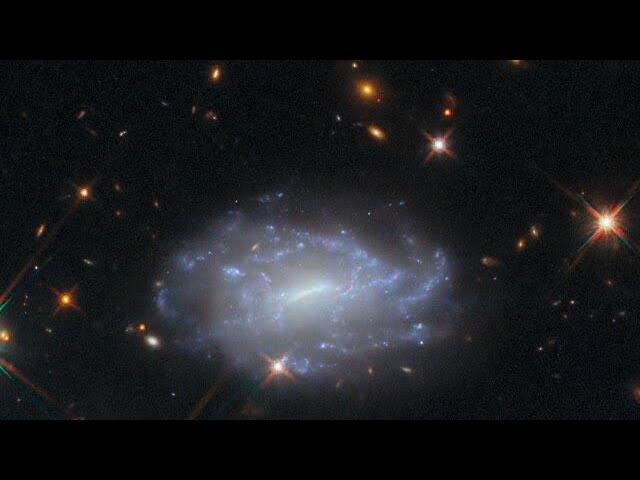
Pan: LEDA 803211
Added 23 Views / 0 LikesBehind this star is a galaxy named LEDA 803211. At 622 million light-years distant, this galaxy is close enough that its bright galactic nucleus is clearly visible, as are numerous star clusters scattered around its patchy disc. Many of the more distant g
-
00:30
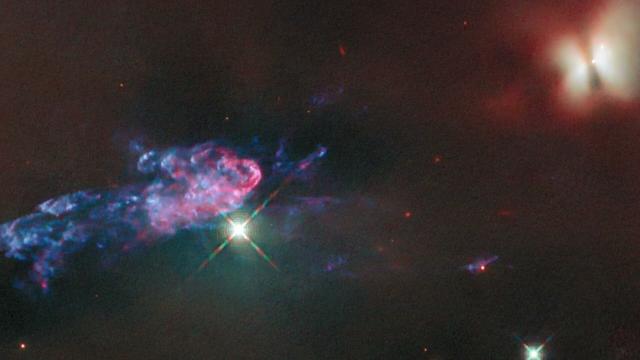
Pan: HOPS 150 and HOPS 153
Added 20 Views / 0 LikesThese protostars get their names from the Herschel Orion Protostar Survey, which was carried out with ESA’s Herschel Space Observatory. The object that can be seen in the upper-right corner of this image is HOPS 150: it’s a binary system, two young protos
-
02:00
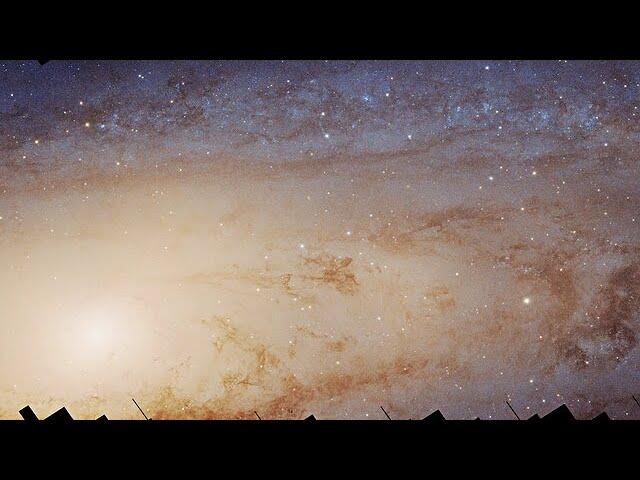
Video tour of Hubble’s panoramic view of the Andromeda Galaxy
Added 21 Views / 0 LikesThis video features the largest photomosaic ever assembled from Hubble Space Telescope observations. It is a panoramic view of the neighboring Andromeda galaxy, located 2.5 million light-years away. It took over 10 years to make this vast and colorful por
-
00:04

Transition Video: 2022 and 2023 observations of Wolf-Rayet 140
Added 19 Views / 0 LikesThis video alternates between two James Webb Space Telescope observations of Wolf-Rayet 140, a two-star system that has sent out more than 17 shells of dust over 130 years. Mid-infrared-light observations highlight them with excellent clarity.By comparing
-
11:32
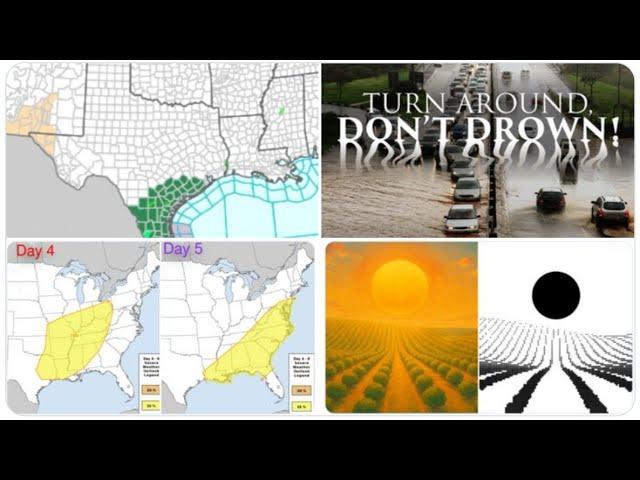
15+ Inches of Rain for South Texas! Near Earth Asteroid 2025 FB8 aligned with Earth, Venus & Mars!
Added 34 Views / 0 Likeswhat. a. week.and it's only wednesday.stay cool.God bless everyone,https://www.paypal.me/THORnewshttps://venmo.com/TEric-Lewisonhttps://www.patreon.com/thornews
-
01:09
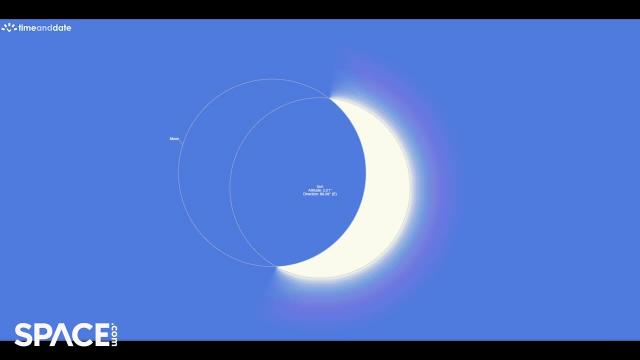
Partial Solar Eclipse in March 2025 - What it will look like? See a map
Added 43 Views / 0 LikesOn March 29, 2025, a partial solar eclipse visible in the northeastern part of North America, much of Europe and Russia. See an animation of what it will look like and a visibility map from Timeanddate.com. [Full Story](https://www.space.com/the-universe/
-
08:51
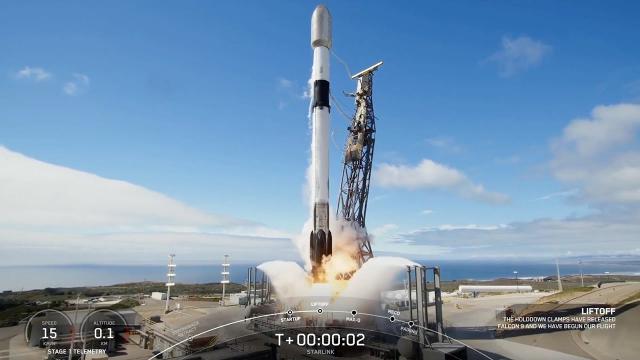
Blastoff! SpaceX launches 27 Starlink satellites from California, nails landing
Added 97 Views / 0 LikesA SpaceX Falcon 9 launched 27 Starlink satellites from Space Launch Complex 4 East (SLC-4E) at Vandenberg Space Force Base in California on March 26, 2025 at 6:11:40 p.m. ET (2211 GMT). Credit: SpaceX
-
05:44
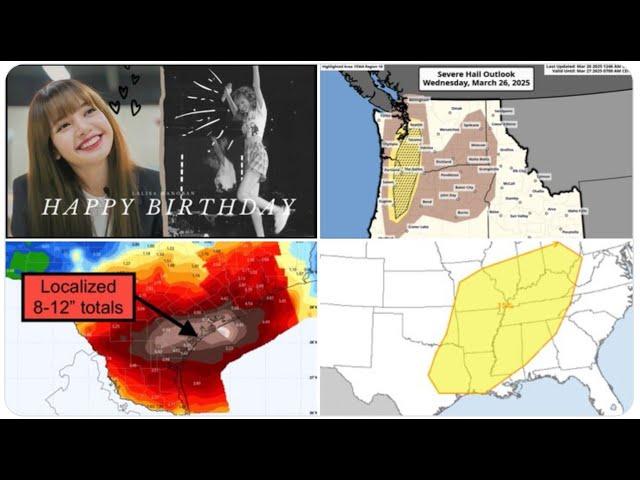
More Monster Eclipse Storms coming! Big Hail in Washington! Floods in South Texas! & BIG Weekend!
Added 60 Views / 0 LikesHappy birthday, LaLisa.God bless everyone,Thttps://www.paypal.me/THORnewshttps://venmo.com/TEric-Lewisonhttps://www.patreon.com/thornews
-
11:04
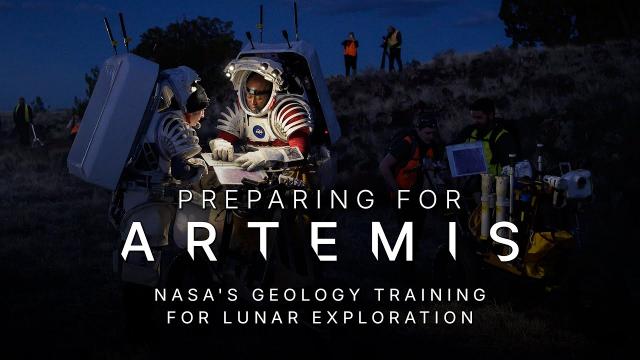
Preparing for Artemis: NASA's Geology Training for Lunar Exploration
Added 60 Views / 0 LikesFrom the volcanic fields of Arizona to the lunar-like landscape of Iceland, NASA scientists are actively preparing astronauts and mission support teams for conducting science on the Moon.Learn about NASA’s rich history of geology training and hear how sci
-
01:07
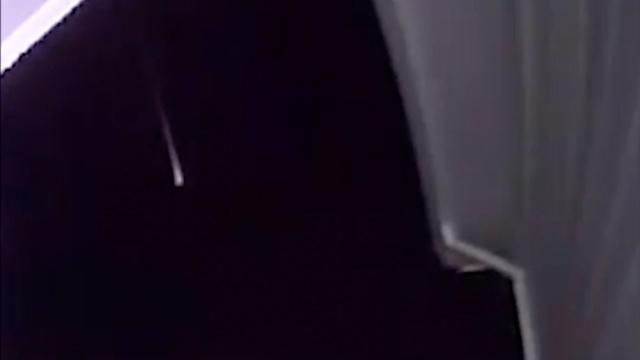
SpaceX Dragon debris burns up on re-entry over California
Added 70 Views / 0 LikesThe American Meteor Society (AMS) received several reports of a fireball in the skies over California on March 24, 2025. "It could have been debris from the satellite known as DRAGON FREEDOM-2 DEB that was launched from Cape Canaveral on 9/28/2024," accor
-
09:20
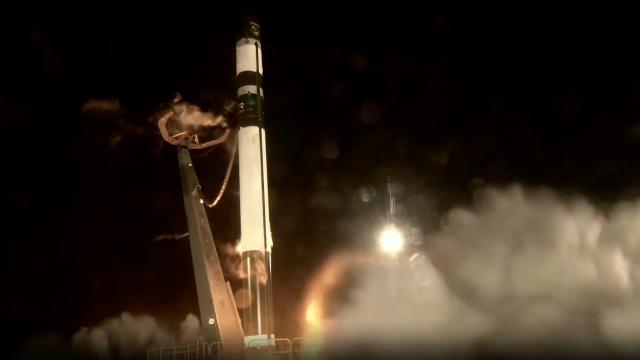
Blastoff! Rocket Lab launches wildfire-hunting satellites from New Zealand
Added 66 Views / 0 LikesAn Electron rocket launched eight wildfire detection satellites for German-based company OroraTech on March 26, 2025 from Rocket Lab's New Zealand launch facility.Credit: Rocket Lab
